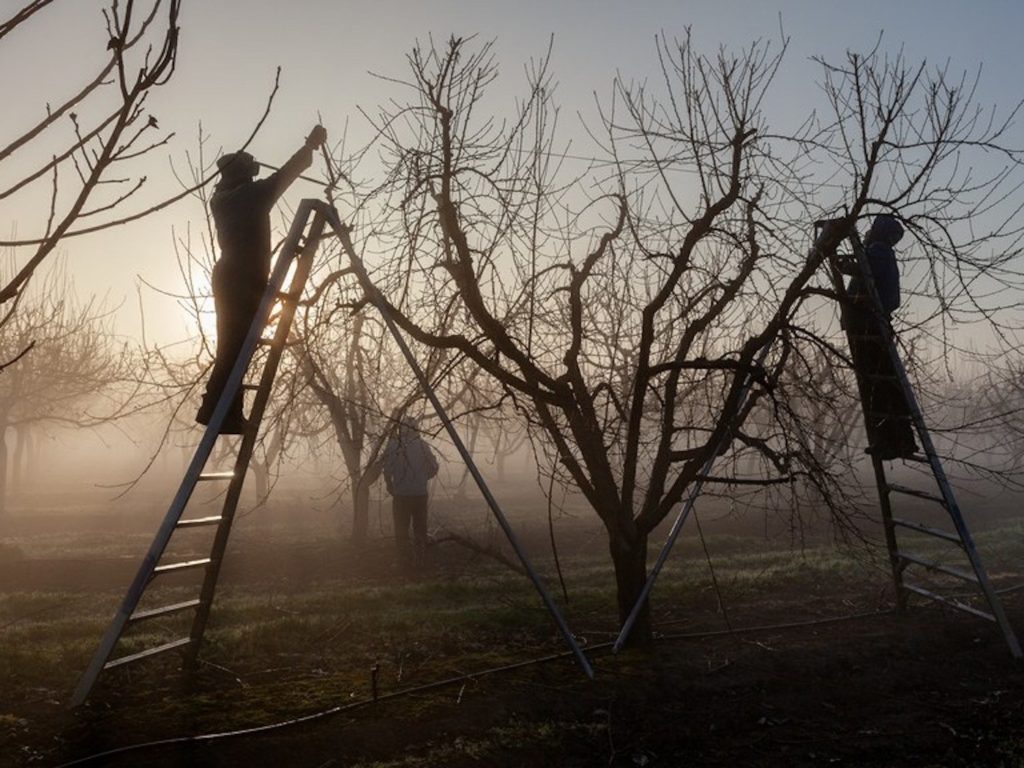Punjabi-American Farmers

The plight of farmers of color is finally getting a little attention in America. There was a lot of consternation over Biden picking Tom Vilsack to return to Agriculture since his 8 years there in Obama’s administration was marked with him not really caring at all about racism in the nation’s farming system. It’s probably Biden’s worst Cabinet selection, along with Gina Raimondo at Commerce. Most of the attention to this has been on Black farmers, which is both fitting but also limiting. Like the rest of American racial reality, it’s a lot more complicated on the ground than Black and White. There are lots of communities of color farming the land. That includes Punjabi farmers in the West and there’s a good High Country News article on them that deserves greater attention.
Today, a quarter of California’s over 200,000 Punjabi Americans work agriculture-related jobs. About 3,000 people with Punjabi origins own farms on about 10% of the state’s 9.6 million acres of cropland, according to Sam Vang, a soil conservationist at the United States Department of Agriculture, who has spent 23 years working closely with California’s Asian American farmers. Most of them live and work at farms along Highway 99, which connects Yuba-Sutter in the north to Bakersfield in the south.
Three hours down the highway from Johl’s peach orchard, in Fresno County, Simranjit Singh Sran tends 100 acres of nuts and grapes under the watchful gaze of his two shepherd dogs — one German, the other Anatolian. Sran’s farm in Fresno County — once dubbed the “farming capital of the world” by the mayor of Fresno — is one of about 1,000 Punjabi American-owned farms that produce over half of the county’s raisins and almonds. For 15 years, Sran, a 28-year-old Punjabi American, has farmed alongside his father, who worked with his father, who arrived in Fresno in 1991, spent 16-hour days in the field and eventually saved the down payment for the family’s first 20 acres of grapes. From February to October, on busy days, Sran sometimes wakes up at 2 a.m. and dons his short sleeve work shirt. He submerges himself in the vines and orchards until sunset, watering the plants, harvesting crops with a Massey Ferguson tractor. Sran’s family farmed for many generations in Punjab, and in California, they managed to get through the previous drought. “This is a lifestyle,” he told me. “This is what we want to do for the rest of our lives.”
No one in Sran’s family entertained the thought of selling even a small piece of land until late 2020, when they barely broke even for four years in a row. If they had to sell the land they’d cultivated for almost two decades, Sran said, speaking half-heartedly, he would try to become a real estate agent or a mathematics professor. But his “dream job,” he told me, had always been inheriting the family business. The wholesale selling price of almonds plunged from $4 a pound in 2014 to $1.75 in 2020, however. This winter’s meager precipitation, leaving the Sierra Nevada snowpack at half of the historical average last spring, could plunge prices even lower. Sran’s farm received less than 40% of its average water allotment from the aqueducts and canals that divert snowmelt for irrigation. He had to pump groundwater to compensate for the deficit and sustain the growth. “Whenever we pump, we definitely see a hole in our pockets,” Sran told me. “Two more years like this, and that’s it.”
The recent storms replenished the Sierra Nevada snowpack and the major reservoirs to above 60% of their historic average. But as California and the Southwest get warmer, the regional climate will become more arid overall. Studies project that even though California could see more precipitation by the end of the century, the associated rise in extreme temperatures and the more extended, greater precipitation fluctuations are likely to increase the need for water on irrigated farmland. More intense, longer and deeper droughts will become the norm. This year, close to 60% of California and over 95% of the Southwest, according to the USDA, is in severe drought. Many farmers are fallowing land and reducing planting, just as they did in 2012. And smaller growers — people who farm less than 300 acres — will be hit the hardest in the coming months. New wells dipping deeper into the earth are expensive. “They don’t have at least $40,000 to drill a new (well). What can you do? You are forced to sell your property. Otherwise, you lose everything,” said Vang, with the USDA. “Every time I talk to them, I feel the pain.”


